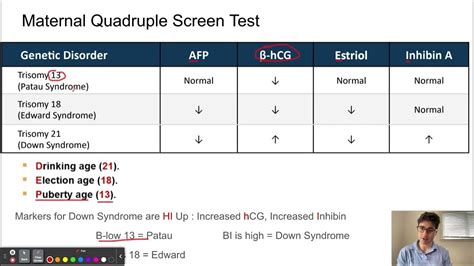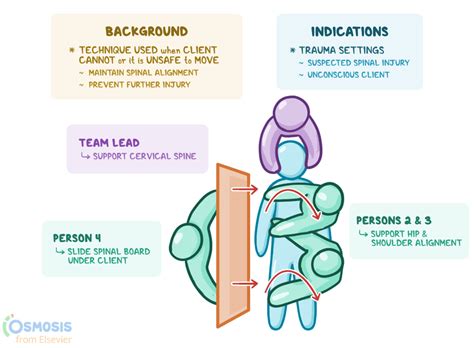The Quadruple Screening Test, also known as the Quad Screen, is a prenatal test that measures the levels of four substances in a pregnant woman’s blood to estimate the risk of certain chromosomal abnormalities in the fetus. These substances include:
- Alpha-fetoprotein (AFP): a protein produced by the fetus
- Human chorionic gonadotropin (hCG): a hormone produced by the placenta
- Estriol (E3): an estrogen produced by the fetus and placenta
- Inhibin-A (DIA): a protein produced by the placenta
The Quadruple Screening Test is typically performed between 15 and 22 weeks of pregnancy, with the optimal time being between 16 and 18 weeks. The test is a non-invasive screening tool, meaning it doesn’t pose any risk to the fetus or the mother.
What does the Quadruple Screening Test screen for?
The Quadruple Screening Test is primarily used to screen for the following chromosomal abnormalities:
- Down syndrome (Trisomy 21): a genetic disorder caused by an extra copy of chromosome 21
- Trisomy 18 (Edwards syndrome): a genetic disorder caused by an extra copy of chromosome 18
- Trisomy 13 (Patau syndrome): a genetic disorder caused by an extra copy of chromosome 13
- Neural tube defects (NTDs): birth defects of the brain or spine, such as spina bifida
How is the Quadruple Screening Test performed?
The test involves a simple blood draw from the mother’s vein, which is then sent to a laboratory for analysis. The laboratory measures the levels of the four substances in the blood and compares them to the average levels found in pregnant women at the same stage of pregnancy.
Understanding the results
The results of the Quadruple Screening Test are usually reported as a risk assessment, which indicates the likelihood of the fetus having a chromosomal abnormality. The risk assessment is based on the levels of the four substances in the blood and the mother’s age, as well as other factors such as her weight and ethnicity.
A low-risk result indicates that the likelihood of a chromosomal abnormality is low, but it does not guarantee a normal pregnancy. A high-risk result indicates that the likelihood of a chromosomal abnormality is higher, and further testing, such as amniocentesis or chorionic villus sampling (CVS), may be recommended to confirm the diagnosis.
Limitations of the Quadruple Screening Test
While the Quadruple Screening Test is a useful tool for estimating the risk of chromosomal abnormalities, it has some limitations:
- False positives: the test can produce false-positive results, which means that a woman may be told she is at high risk when, in fact, the fetus is normal.
- False negatives: the test can also produce false-negative results, which means that a woman may be told she is at low risk when, in fact, the fetus has a chromosomal abnormality.
- Detection rate: the test detects only about 80% of Down syndrome cases and a smaller percentage of other chromosomal abnormalities.
Next steps after the Quadruple Screening Test
If the results of the Quadruple Screening Test indicate a high risk of a chromosomal abnormality, the mother’s healthcare provider may recommend further testing, such as:
- Amniocentesis: a procedure that involves withdrawing a sample of amniotic fluid from the uterus to test for chromosomal abnormalities.
- Chorionic villus sampling (CVS): a procedure that involves removing a sample of cells from the placenta to test for chromosomal abnormalities.
- Ultrasound: a non-invasive imaging test that uses high-frequency sound waves to produce images of the fetus and placenta.
It’s essential for expectant mothers to discuss the results of the Quadruple Screening Test with their healthcare provider to determine the best course of action and to understand the implications of the results.
In conclusion, the Quadruple Screening Test is an essential tool for expectant mothers to assess the risk of chromosomal abnormalities in their fetus. However, it’s crucial to understand the limitations of the test and to discuss the results with a healthcare provider to determine the best course of action.
What is the Quadruple Screening Test, and what does it screen for?
+The Quadruple Screening Test is a prenatal test that measures the levels of four substances in a pregnant woman's blood to estimate the risk of certain chromosomal abnormalities, including Down syndrome, Trisomy 18, and neural tube defects.
When is the Quadruple Screening Test typically performed?
+The Quadruple Screening Test is typically performed between 15 and 22 weeks of pregnancy, with the optimal time being between 16 and 18 weeks.
What are the limitations of the Quadruple Screening Test?
+The Quadruple Screening Test has limitations, including false positives and false negatives, and it detects only about 80% of Down syndrome cases and a smaller percentage of other chromosomal abnormalities.
It’s essential for expectant mothers to understand the Quadruple Screening Test and its limitations to make informed decisions about their pregnancy.



